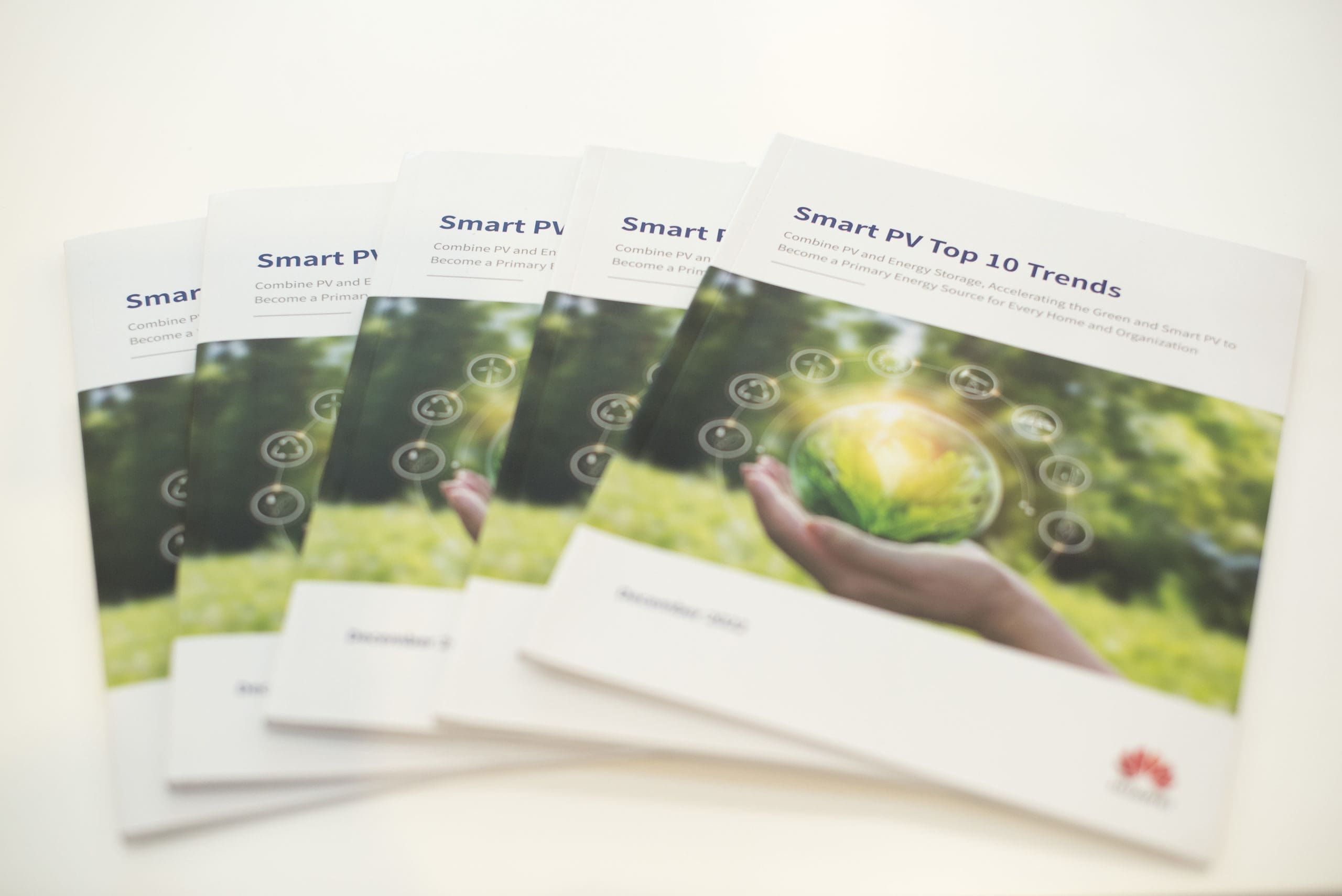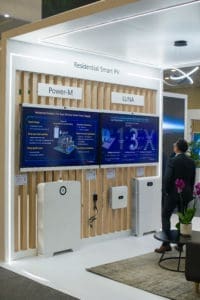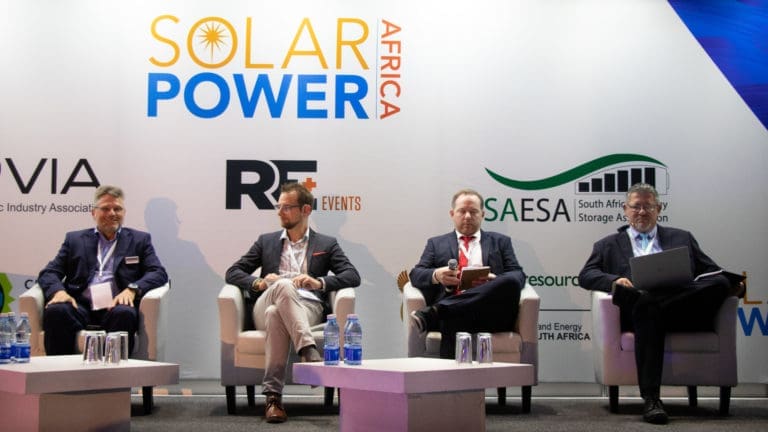Upgraded security, improved grid integration, and the increasing use of artificial intelligence (AI). Those are just some of the trends identified by David Minnis, Huawei Senior Solution Director of Energy Storage Systems (ESS), which are set to shape the smart photovoltaic (PV) space in the coming years.
Speaking at the Solar Power Africa 2023 Conference, which took place in Cape Town, Minnis explained that while increased demand for renewable energy sources has resulted in booming growth for the global solar PV industry, Africa still faces several challenges when it comes to meeting its immense potential.
According to the International Energy Agency (IEA), Africa has 60% of the world’s best solar resources, but only one percent of solar generation capacity. While there’s clearly immense potential for solar power to help Africa reduce emissions and widen citizen’s access to electricity, the continent is only in the early stages of building its solar resources.
In order to make the most of that potential, Minnis says it’s critical that the continent grasp and exploit these 10 trends:


Trend 1: New type generator embedded photovoltaic (PV) and energy storage systems(ESS)
As more renewable energy is fed into power grids, various complex technical problems arise in terms of system stability, power balance, and power quality.
But With the integration of PV and ESS as well as grid forming technology, we can build ‘Smart PV+ESS generators’ that use voltage source control instead of current source control, provide strong inertia support, transient voltage stabilisation, and fault ride-through capabilities. This will transform PV from grid following to grid forming, helping increase PV feed-in.
Trend 2: High density and reliability for PV and ESS solutions
Going forward, PV plants are set to be denser and more reliable. Take PV inverters for example. The direct current (DC) voltage of inverters is increased from 1100V to 1500V. With the application of new materials such as silicon carbide (SiC) and gallium nitride (GaN), as well as the full integration of digital, power electronics, and thermal management technologies, it is estimated that the power density of inverters will increase by about 50% in the next five years, while maintaining a high degree of reliability.
Trend 3: Module-level power electronics (MLPE)
In a PV system, module-level power electronics (MLPE) refers to power electronic equipment that can perform refined control on one or more PV modules, including micro inverters, power optimisers, and disconnectors. MLPE brings unique values such as module-level power generation, monitoring, and safe shutdown. As PV systems become safer and more intelligent, the penetration rate of MLPE in the distributed PV market is expected to reach 20% to 30% by 2027.
Trend 4: String energy storage
In contrast with traditional centralised ESS solutions, the smart string ESS solution adopts a distributed architecture and modular design. It uses innovative technologies and digital intelligent management to optimise energy at the battery pack level and control energy at the rack level. This results in more discharge energy, optimal investment, simple O&M, as well as safety and reliability throughout the lifecycle of the ESS.


Trend 5: Cell-level refined management
Similar to PV systems shifting towards MLPE, lithium BESSs are set to develop towards more refined management levels. Only through refined management at battery cell level can PV systems improve their efficiency and safety. Traditional battery management systems (BMS) can only summarise and analyse limited data, making it almost impossible to detect faults and generate warnings in the early stages. BMS therefore needs to use technologies such as data and AI to be more sensitive, intelligent, and even predictive.
Trend 6: PV + ESS + grid integration
On the power generation side, it’s becoming increasingly common to build clean energy bases of PV+ESS that supply electricity to load centres through UHV power transmission lines. On the power consumption side, virtual power plants (VPPs) are becoming increasingly popular in many countries.
As such, building a stable energy system that integrates the PV + ESS + Grid to support PV power supply and feed-in to grid will become a key measure to ensure energy security. We can integrate digital, power electronics, and energy storage technologies to achieve multi-energy complementation.
Trend 7: Upgraded safety
Safety is the cornerstone of the PV and ESS industry’s development. This requires us to systematically consider all scenarios and links and fully integrate power electronics, electrochemical, thermal management, and digital technologies to upgrade system safety. In a PV plant, faults caused by the DC side account for more than 70% of all faults. The inverter therefore needs to support smart string disconnection and automatic connector detection. Multiple technologies, such as power electronics, cloud, and AI, therefore needs to be used to implement refined management of ESS from battery cells to whole system.
Trend 8: Security and trustworthiness
In addition to their enormous benefits, PV systems also have various risks, including equipment safety and information security. Equipment safety risks mainly refer to shutdowns caused by faults. Information security risks refer to external network attacks. To cope with these challenges and threats, enterprises and organisations need to establish a complete set of “security and trustworthiness” management mechanisms, including the reliability, availability, security, and resilience of systems and devices.
Trend 9: Digitalisation
Conventional PV plants have a large amount of equipment but lack information collection and reporting channels.
With the introduction of advanced digital technologies such as 5G, the Internet of Things (IoT), cloud computing, sensing technologies, and big data, PV plants can send and receive information, using “bits” (information flows) to manage “watts” (energy flows).
Trend 10: AI applications
As the energy industry moves towards an era of data, knowing how to better collect, utilise, and maximise its value has become a major priority. AI will be crucial to its ability to do so. AI technologies can be widely applied to renewable energy fields and play an indispensable role in the entire lifecycle of PV + ESS, including manufacturing, construction, O&M, optimisation, and operation. In the renewable energy field, AI, like power electronics and digital technologies, will drive profound industry transformation.
According to Minnis, by applying these 10 energy trends, Huawei is expecting to cooperate with more partners to develop more advanced industry solution and supply Africa with sustainable energy supplement, thus lighting up a ‘greener’ Africa.

2 Comments
Pingback: Power Sector And Other Related News Stories For Monday 20th February 2023 – AEDC
Pingback: Get Ready to Soar with Solar Panels on Your Flat Roof! > Roofing Child's Play